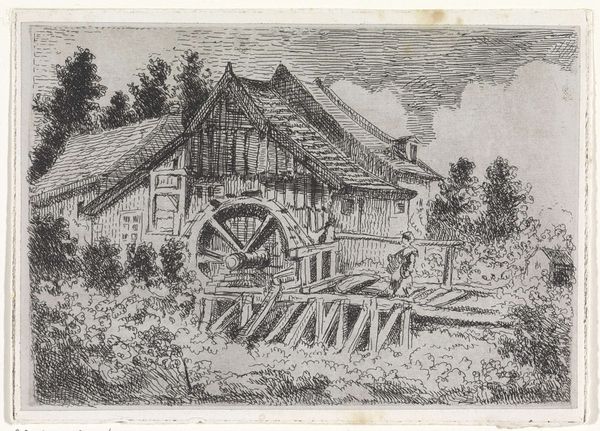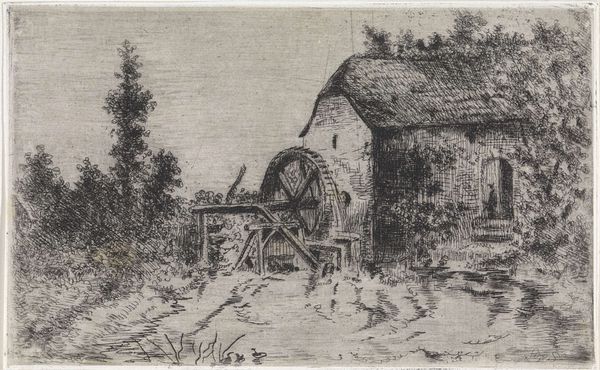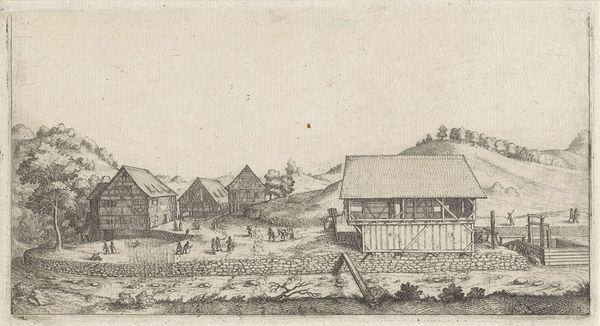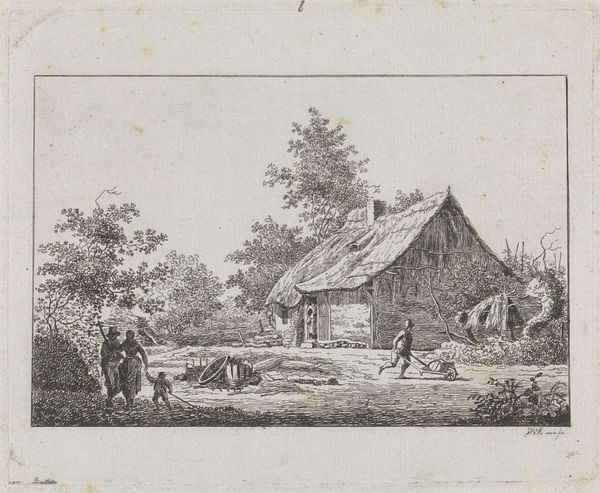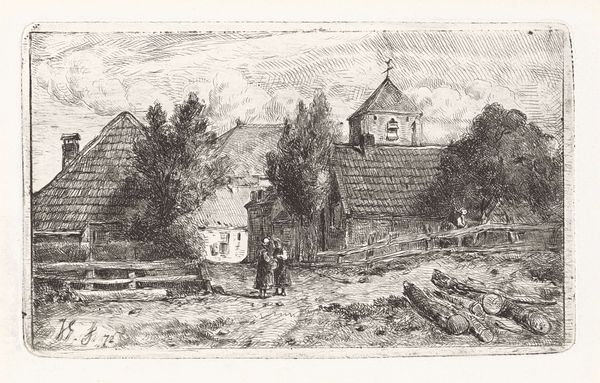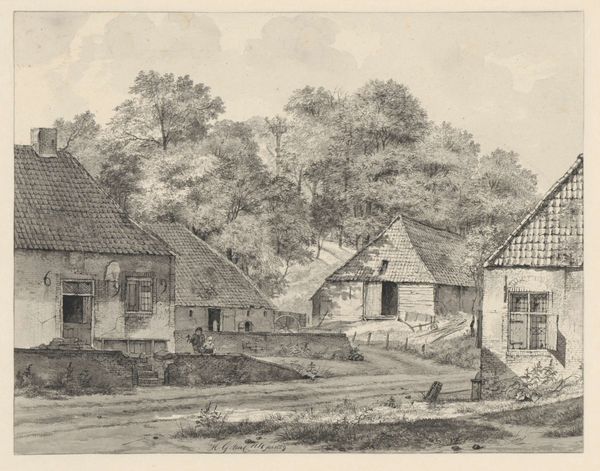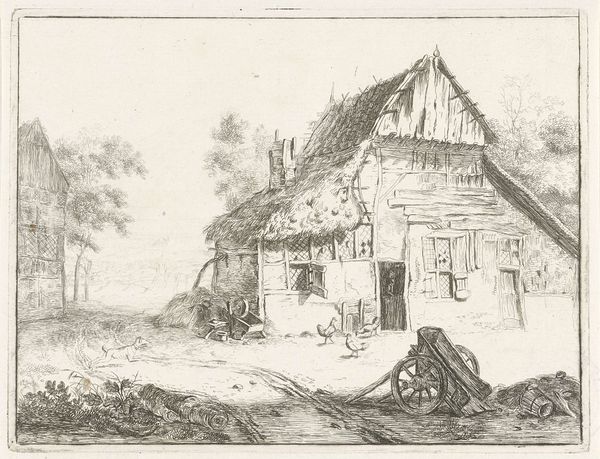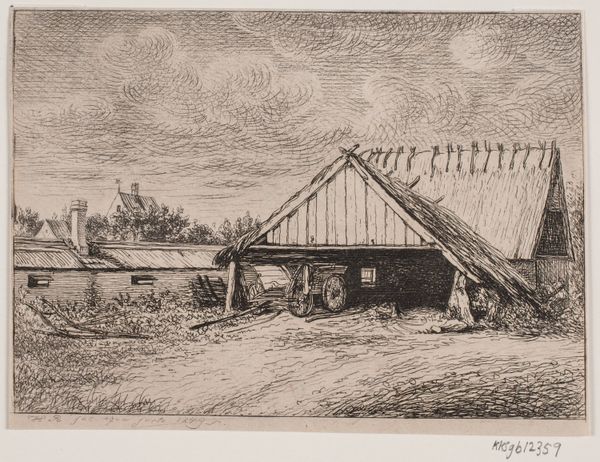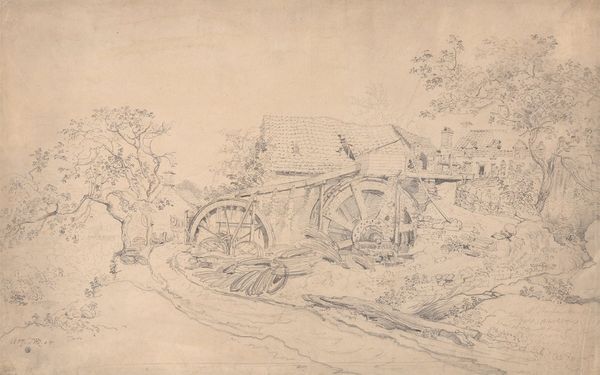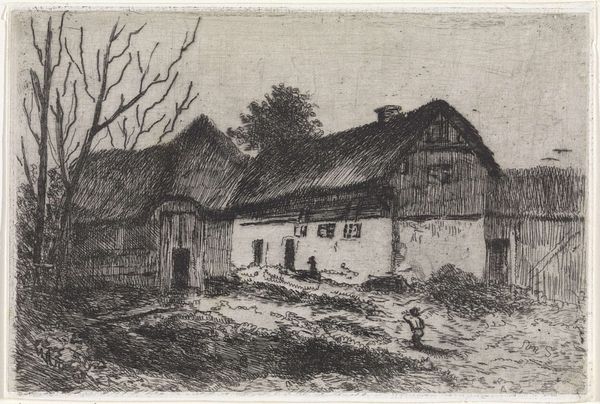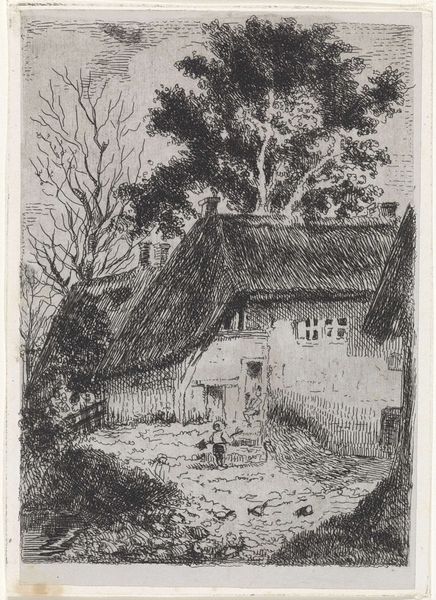
print, etching
#
dutch-golden-age
# print
#
etching
#
landscape
#
realism
Dimensions: height 107 mm, width 153 mm
Copyright: Rijks Museum: Open Domain
Curator: This etching, dating from sometime between 1831 and 1888, is entitled "Watermolen" or "Water Mill." It's the work of Arnoud Schaepkens, rendering a seemingly quiet moment with tremendous detail. What's your initial impression? Editor: Bleak. There is something almost sinister about this industrial intrusion into nature, as rendered with all those nervous, dark lines. It's interesting to juxtapose such rural scenes with the dawn of industry. Curator: Absolutely. The socio-political context is key here. We see industrialization pushing against agrarian life, capturing that tension. Notice the solitary figure; one can’t help but wonder about their relationship to this structure and the implications it bears on their livelihood. Editor: Indeed. The figure seems like they are working on the deck above the turning waterwheel. It's not a celebration of idyllic pastoral life, it is a visual documentation of work in the margins. Let’s consider the image's reproduction—the deliberate choice of etching as medium adds another layer to its historical framing. Curator: You raise a vital point. The deliberate, detailed nature of etching emphasizes the labor of its creation as if echoing the labor of operating such a structure. I think too, about class. This water mill, likely privately owned, speaks volumes about the dynamics of labor. It evokes the exploitation inherent within these "romantic" depictions of nature, particularly regarding resource extraction. Editor: It’s unsettling to see nature reduced to such a commodity-generating machine, don’t you think? Although these water mills powered all sorts of different industries, including saw mills, tanneries and even paper production, there is the implicit question of where the products are going and who is being privileged by its production? It reflects how land and its resources can become another extension of patriarchy’s desire to consume and extract. Curator: Precisely! Thinking through a contemporary lens of intersectionality, we recognize how gender, class, and environmental exploitation intersect here. There is a stark reminder in the scene that “progress” extracts not just resources but people, too. Editor: Such an impactful commentary quietly contained in an old print. Makes one think twice about rural landscapes. Curator: It does force us to confront the hidden stories and inherent biases woven into historical portrayals, demanding a critical reevaluation of what appears peaceful or conventional.
Comments
No comments
Be the first to comment and join the conversation on the ultimate creative platform.
